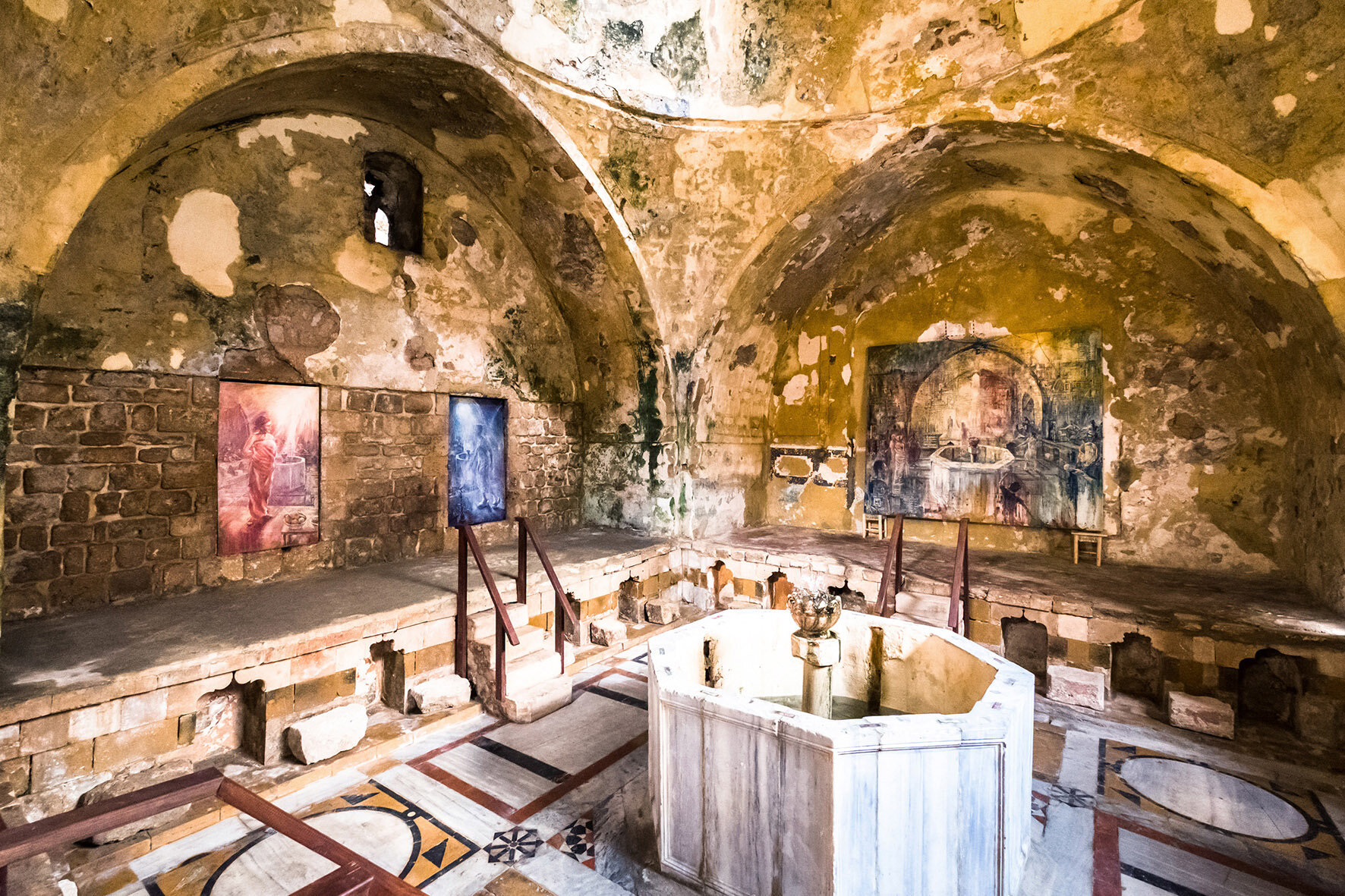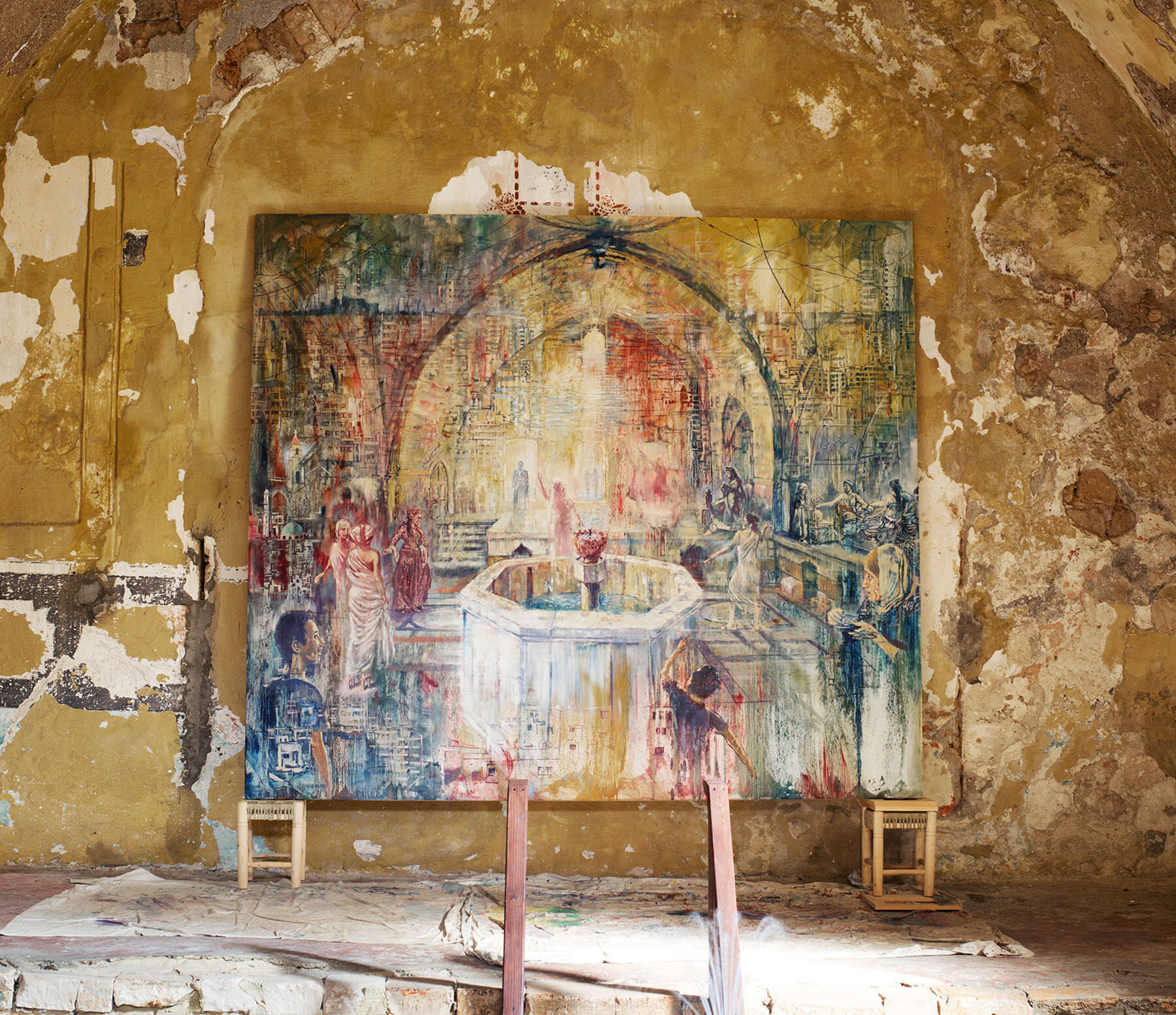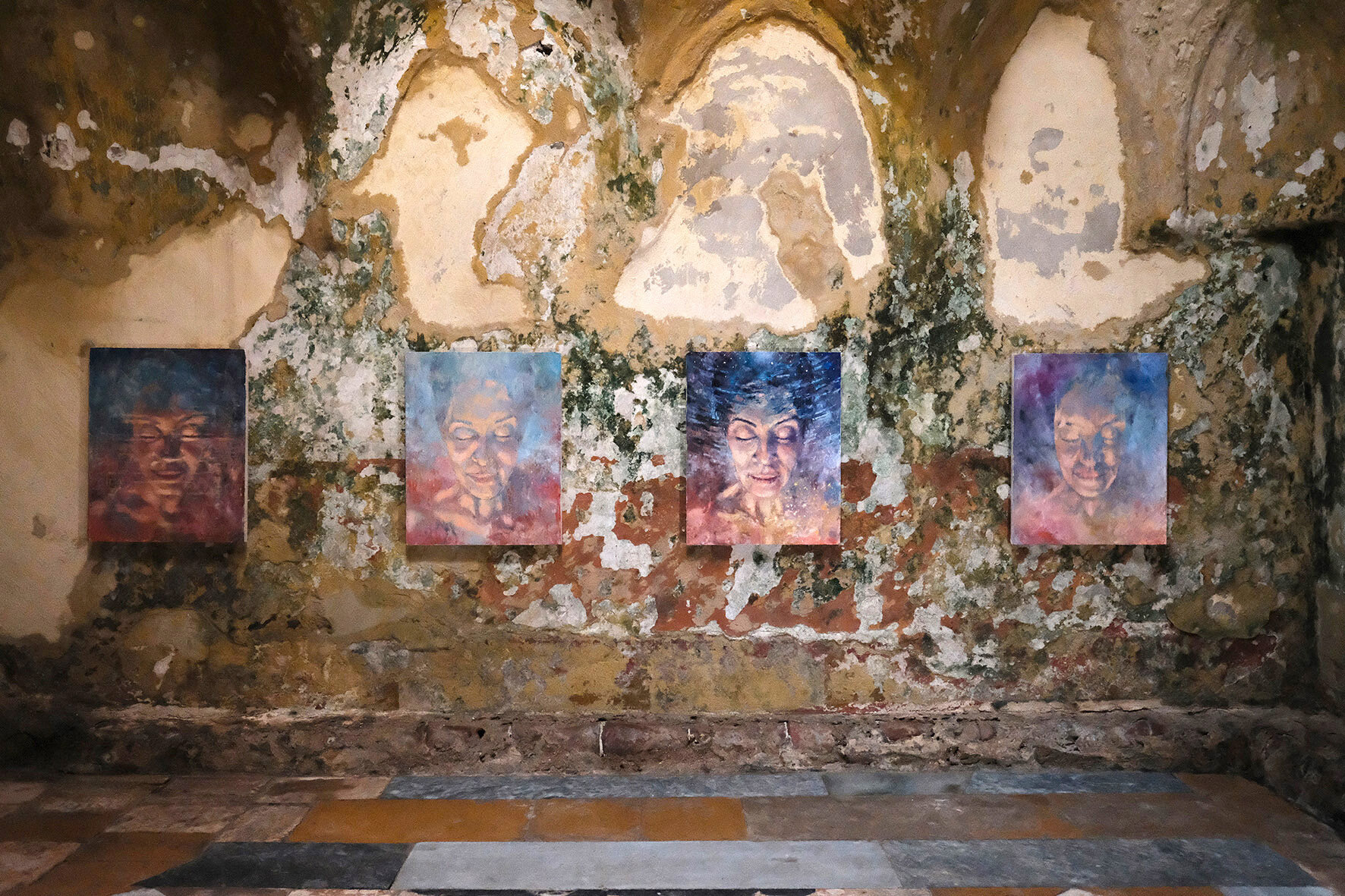
Hammam Al Jadeed entrance hall prior to restauration, with paintings by Tom Young (photo courtesy Karim Sakr).
Tom Young
The hidden history in ancient walls is a fascinating source of inspiration. I’m exploring how to fuse paintings with the textured surfaces of an ancient hammam in Saida Old Souq in Lebanon, which had been abandoned for 70 years until the current artistic intervention..
Hammam Al Jadeed is a beautifully preserved Ottoman style bathhouse in Saida. Invited by the new owner of the site, Said Bacho, I started work in Saida on a series of sixty site-specific paintings which now constitute the on-going Revival exhibition.
Despite numerous set-backs due to the Uprising of 2019-20, the Covid pandemic, the Beirut Port Blast in August 2020 and ongoing political and economic crisis in Lebanon, “Revival” finally opened in October 2020 and remains open through Summer 2021. The exhibition is collaborative: regular art workshops for local and international schools are run on-site, and live concerts featuring ‘ud player Ziad Al Ahmadie, singer Dania Khatib and accompanying dance performances.
The project is intended to benefit the local community, as well as attracting visitors from around Lebanon to the historic labyrinth of Saida’s old Souq. Local craftsmen and young guides are employed by the Sharqy Foundation which was set up by Bacho in 2018 and manages the site.

Fountain on site painting by Tom Young (photo Elsie Haddad).
The walls speak: paintings emerge from a sense of place. It is a multi-dimensional immersive experience, awakening all five senses. By working for months in the hammam itself, and living in a nearby disused convent in the souq, I feel the place and become a part of the community.
Some of the paintings allude to polarity — the journey from cold to hot, blue to red, East to West, the sun to moon, male to female, ancient to contemporary. Exploring coexistence is a universal metaphor: symbolic clues to the how unity may be achieved through recognition of duality rather than its denial, and symbolic of Lebanon as a location where opposing forces meet.
Many of the paintings are about spirituality, meditation and how a state of internal peace can be reflected in the transformation of a place which was originally designed a place of healing and cleansing. In these times of anxiety and disease, we need an escape: if only for a day.
The hammam was also a place where the Muslim, Christian and Jewish communities would gather to cleanse and attend one another’s ritual wedding ceremonies before it closed in 1949 — quite possibly because of the Nakba in 1948 which decimated the Jewish community in South Lebanon. This surely contributed to the closure of the hammam, as well as the running water that was beginning to reach people’s private homes in the 1950s. The bathhouse no longer performed its function in society; a treasure was lost.
I’m inspired by the stories told to me by elderly residents of Saida who are featured in the film “Hammam Memories” below, edited by Lebanese filmmaker Tony El Khoury. They tell me of an age when the hammam performed a semi-spiritual communal role in society which no church, mosque or synagogue can achieve.
The exhibition celebrates a time of harmony and togetherness, a time before political walls and definitions separated these communities. It is a bridge: an attempt to shine a light on wisdom from the past, transcend the differences which divide us, and evoke a time which may to inspire how to live positively in the present moment, and generations to come.




